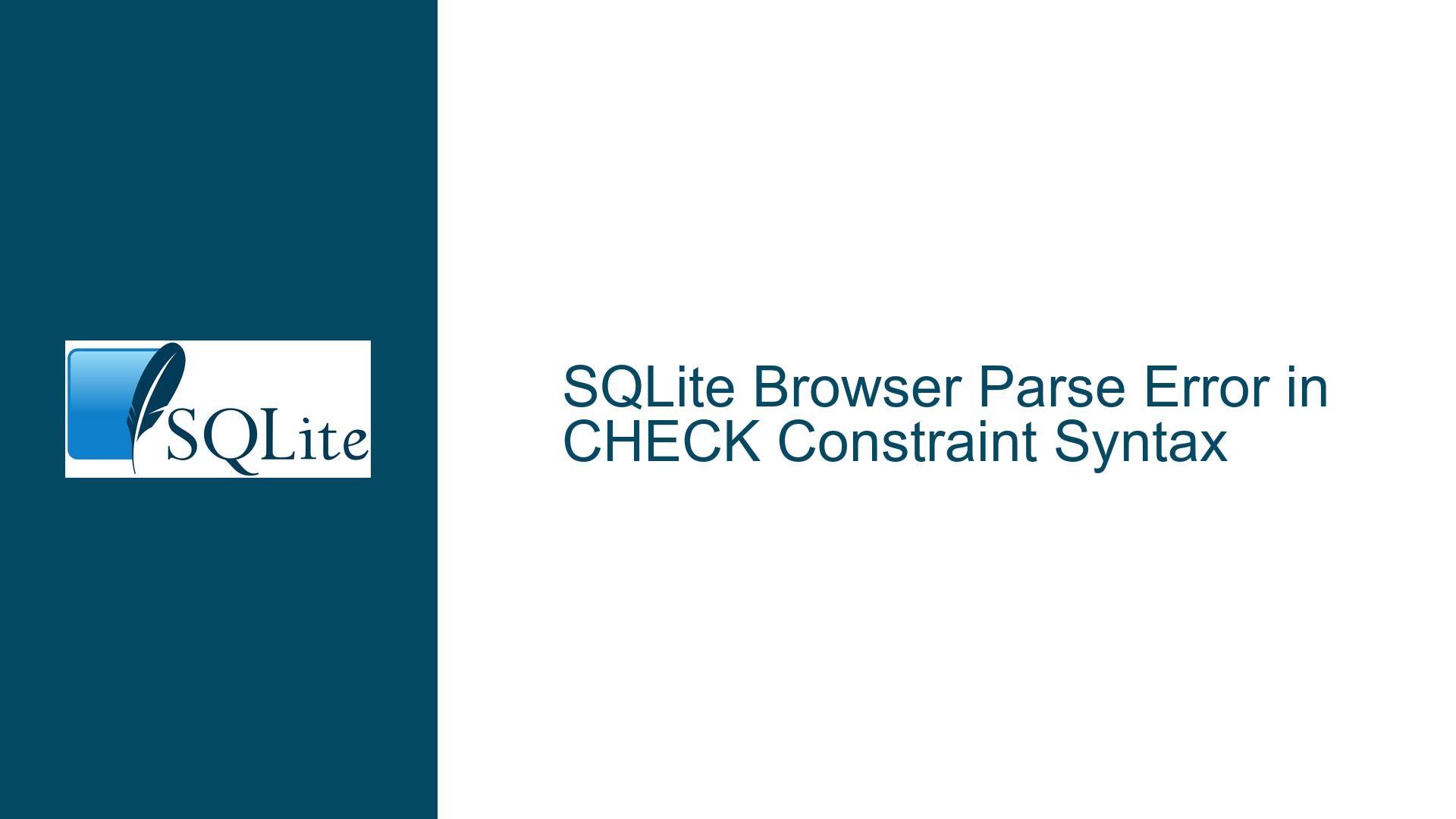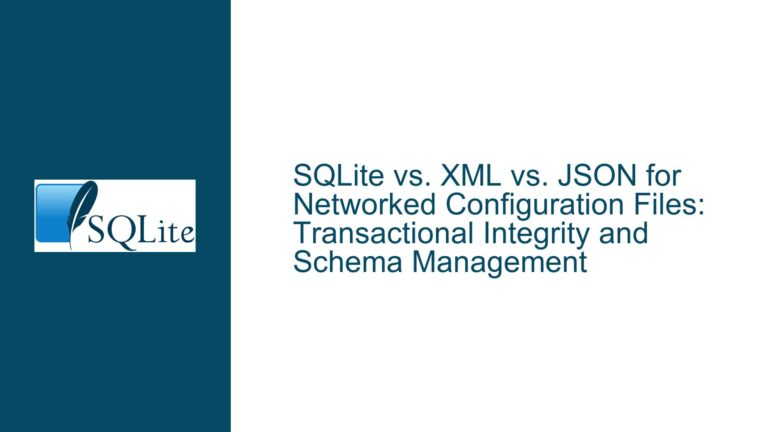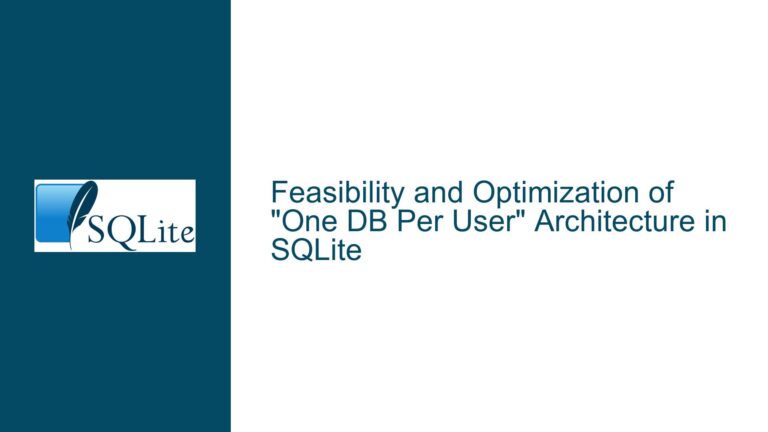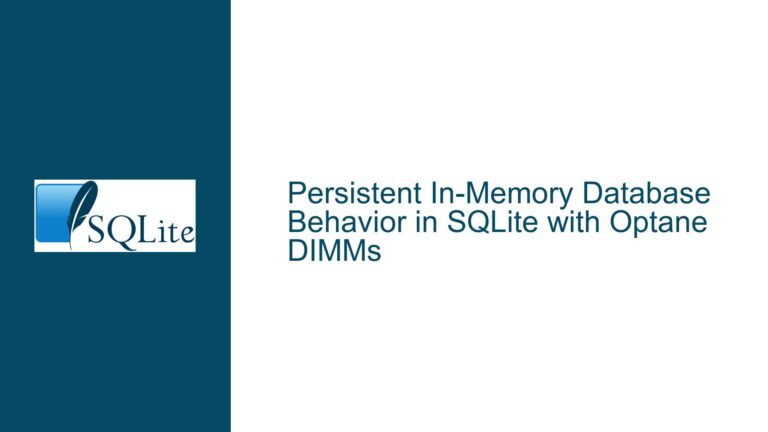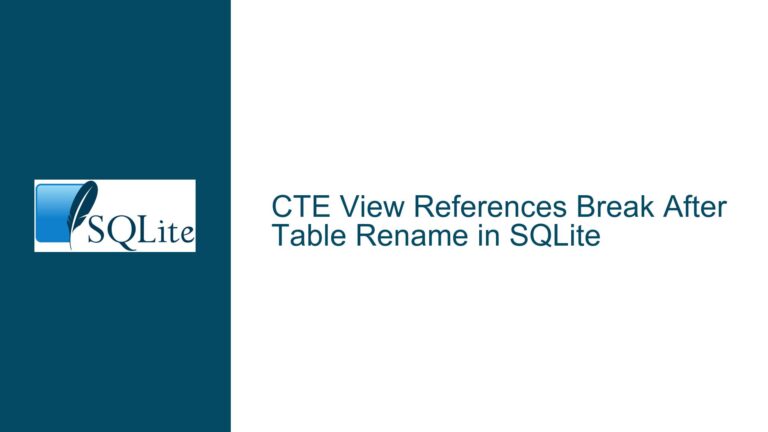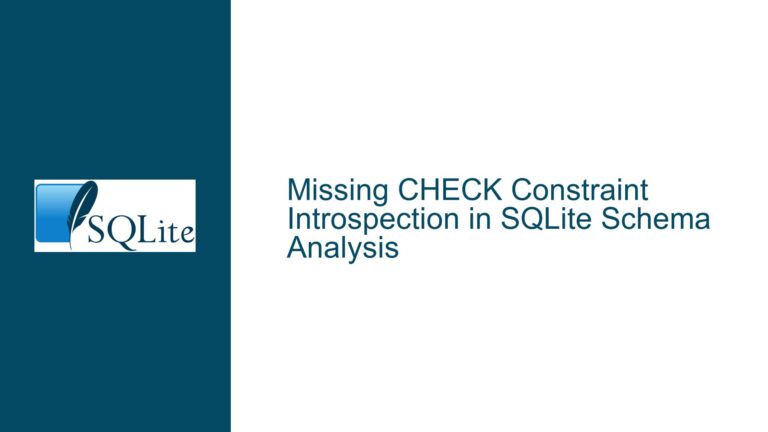SQLite Browser Parse Error in CHECK Constraint Syntax
SQLite Browser Misinterprets CHECK Constraint Syntax
The issue at hand revolves around a misinterpretation of SQLite’s CHECK constraint syntax by a third-party tool, SQLite Browser. The error message Sqlite parse error: line 1:94: expecting RPAREN, found 'OR' suggests that SQLite Browser is unable to correctly parse the CHECK constraint within a CREATE TABLE statement. This error is particularly misleading because the SQLite engine itself does not raise any issues with the same CREATE TABLE statement. The discrepancy arises from the fact that SQLite Browser, while a useful tool for visualizing and managing SQLite databases, is not developed by the SQLite team and may have its own parsing logic that diverges from the official SQLite implementation.
The CREATE TABLE statement in question includes CHECK constraints designed to enforce type consistency and value ranges for specific columns. For instance, the identifier_s1 column is expected to be either NULL or of type text, while the is_internal_b0 column should be either NULL or an integer between 0 and 1. These constraints are syntactically correct according to SQLite’s documentation and are successfully executed by the SQLite engine. However, SQLite Browser fails to parse these constraints, leading to the erroneous error message.
This issue is significant because it can mislead users into believing that their SQL syntax is incorrect, causing unnecessary confusion and potentially leading to wasted time debugging valid SQL statements. The root cause lies in the parsing logic of SQLite Browser, which appears to have difficulty handling complex CHECK constraints involving logical operators like OR and function calls like typeof().
SQLite Browser’s Parsing Logic and Third-Party Tool Limitations
The primary cause of this issue is the parsing logic employed by SQLite Browser, which diverges from the official SQLite engine’s interpretation of SQL syntax. SQLite Browser is a third-party tool designed to provide a graphical interface for managing SQLite databases. While it is a valuable tool for many users, it is not maintained by the SQLite development team and may not always align perfectly with the official SQLite implementation.
In this case, SQLite Browser’s parser appears to struggle with the CHECK constraint syntax, particularly when it involves logical operators and function calls. The CHECK constraint in question uses the OR operator to allow for NULL values while enforcing type and value constraints for non-NULL values. This is a valid and common use case in SQLite, but SQLite Browser’s parser incorrectly interprets this syntax, leading to the misleading error message.
Another contributing factor is the lack of detailed error reporting in SQLite Browser. The error message expecting RPAREN, found 'OR' does not provide sufficient context or guidance for users to understand the issue. This lack of clarity can make it difficult for users to diagnose and resolve the problem, especially if they are not familiar with the intricacies of SQLite’s syntax and the differences between the official SQLite engine and third-party tools.
Additionally, the issue highlights the importance of using the official SQLite tools, such as the SQLite CLI (sqlite3), for validating SQL syntax and diagnosing issues. The SQLite CLI is maintained by the SQLite development team and provides a reliable and accurate representation of how SQLite interprets SQL statements. By contrast, third-party tools like SQLite Browser may introduce their own quirks and limitations, which can lead to confusion and misinterpretation of SQL syntax.
Validating SQL Syntax with Official SQLite Tools and Reporting Issues to Third-Party Developers
To address this issue, users should first validate their SQL syntax using the official SQLite CLI (sqlite3). This can be done by executing the CREATE TABLE statement directly in the SQLite CLI and checking for any errors or warnings. If the statement executes successfully in the SQLite CLI but fails in SQLite Browser, the issue is likely with SQLite Browser’s parsing logic rather than the SQL syntax itself.
For example, users can open the SQLite CLI and execute the following commands to validate their CREATE TABLE statement:
sqlite3
.open /path/to/database.db
CREATE TABLE images_raw(
identifier_s1 VARCHAR UNIQUE PRIMARY KEY CHECK(identifier_s1 IS NULL OR (typeof(identifier_s1)='text')),
path_s1 VARCHAR UNIQUE CHECK(path_s1 IS NULL OR (typeof(path_s1)='text')),
is_internal_b0 INTEGER CHECK(is_internal_b0 IS NULL OR (typeof(is_internal_b0)='integer' AND is_internal_b0 BETWEEN 0 AND 1))
);
.schema images_raw
If the CREATE TABLE statement executes without errors and the .schema command displays the correct table definition, the SQL syntax is valid, and the issue lies with SQLite Browser.
Once the issue has been confirmed to be with SQLite Browser, users should report the problem to the developers of SQLite Browser. This can be done by opening an issue on the SQLite Browser GitHub repository, providing a detailed description of the problem, including the exact CREATE TABLE statement that causes the error and the error message produced by SQLite Browser. The developers can then investigate the issue and make any necessary changes to the parsing logic to ensure compatibility with SQLite’s syntax.
In the meantime, users can continue to use SQLite Browser for other tasks while relying on the SQLite CLI for validating SQL syntax and diagnosing issues. This approach ensures that users can work with SQLite databases effectively while avoiding the pitfalls associated with third-party tools that may not fully align with the official SQLite implementation.
In conclusion, the issue of SQLite Browser misinterpreting CHECK constraint syntax highlights the importance of using official tools for validating SQL syntax and the potential limitations of third-party tools. By validating SQL syntax with the SQLite CLI and reporting issues to third-party developers, users can ensure that their SQL statements are correctly interpreted and avoid unnecessary confusion and frustration.
